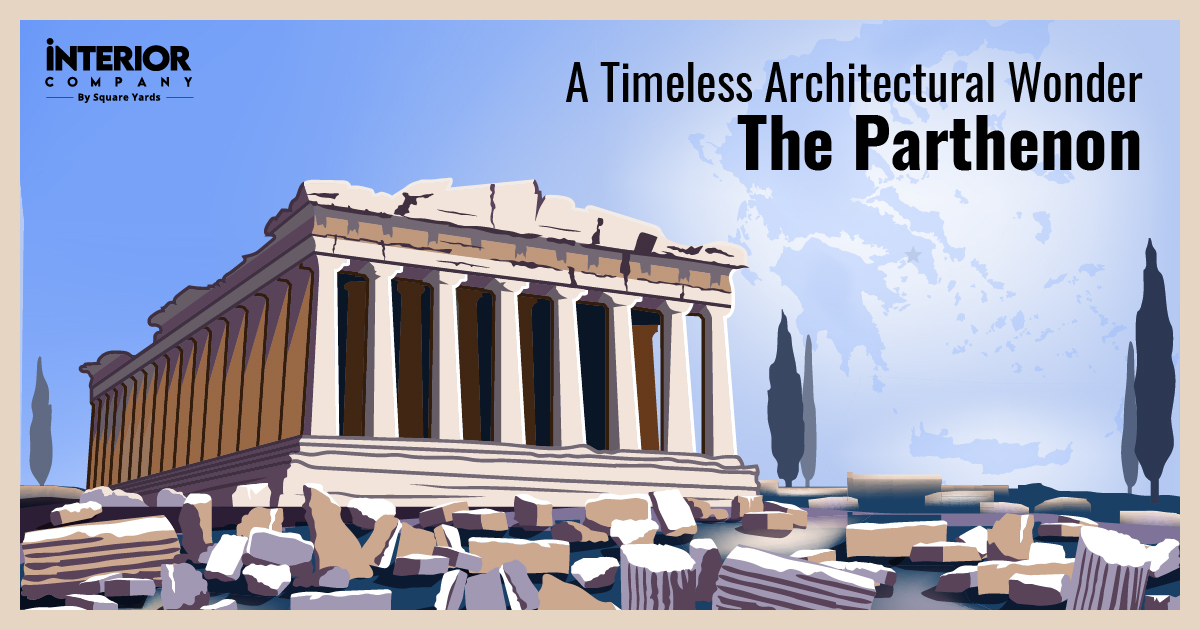“Earth proudly wears the Parthenon as the best gem upon her zone”.
This 2500-year-old magnificent temple tells an enduring story of Classical Ancient Greek Architecture and ‘Doric columns’ gracing the site. It was constructed to pay homage to the Greek goddess Athena and has been an epicentre of this city’s history, having witnessed various battles and regimes across centuries. Today, this architectural masterpiece is the crowning jewel of the Acropolis of Athens.
Also Read: The Architecture of Machu Picchu
But there is still much more to learn about the Parthenon design and the Greek architecture. Let’s embark on a journey of time-travelling adventure to marvel at the breathtaking beauty of the Parthenon – its symmetrical columns, intricately crafted friezes, and remarkably balanced structure.
Historical Context
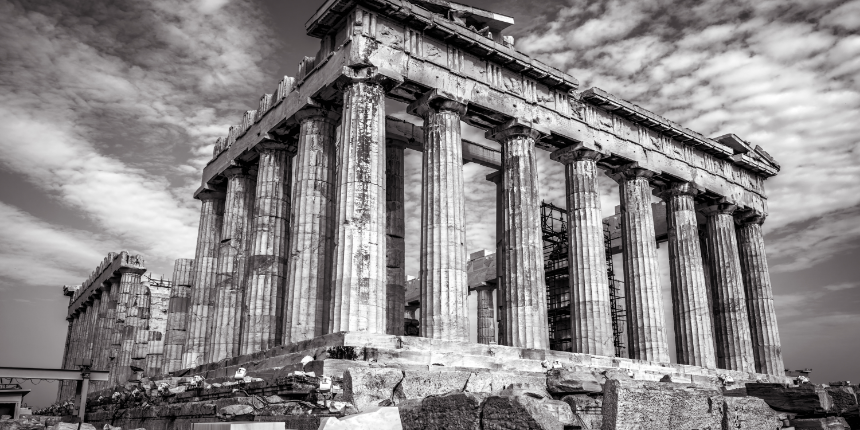
Did you know? The awe-inspiring Building of the Parthenon, completed in merely nine years—a record-breaking in that era. With such intricate detail without any modern tools, it is a testament to the undeniable talents of Parthenon architects and their remarkable feat of engineering.
The Parthenon was built on the foundations of an older Athenian temple destroyed by the Persians in 480 BC. The construction for the new temple began in 447 BC and was completed in 438 BC, in an astonishingly short time of just nine years. However, the exterior decoration work and sculpting ended in 432 BC. This imposing monument was erected to honour the city’s power, culture, and accomplishments.

View from Filopappou Hill- Acropolis of Athens, Greece.
It was commissioned under the legendary sculptor Phidias overseeing the creation of its intricate sculptures, now housed in the Acropolis Museum. Parthenon Architects Ictinus and Callicrates drew up the plans with its hallmark doric columns and iconic characteristics, making it a symbolic example of the ingenuity and creativity of ancient Greece.
Also Read: Construction of the Great Wall of China
Why Was the Parthenon Built?
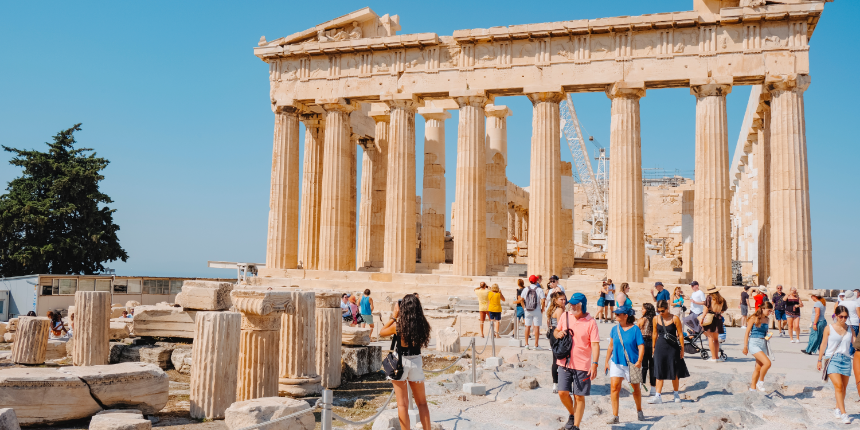
Before the world-famous Parthenon on the Acropolis of Athens was constructed, the Athenians had been worshipping at an Older Parthenon. However, it had been destroyed by the destructive Persian forces during their invasion. As a result, a renewed Parthenon was built on the Acropolis of Athens.
The Parthenon Acropolis, originally dedicated to the goddess of wisdom, handicraft, and warfare, Athena Parthenos. It served as a house of devotion during the Athenian Empire and a treasury. Through the years, the Parthenon endured a transformation, with the structure being used as a place of worship, first as a temple for the Greeks, then a mosque under the Ottomans, and as a Christian church devoted to the Virgin Mary. Today, it proudly stands as a majestic embodiment of the heart and soul of the several cultures who have made it their own.
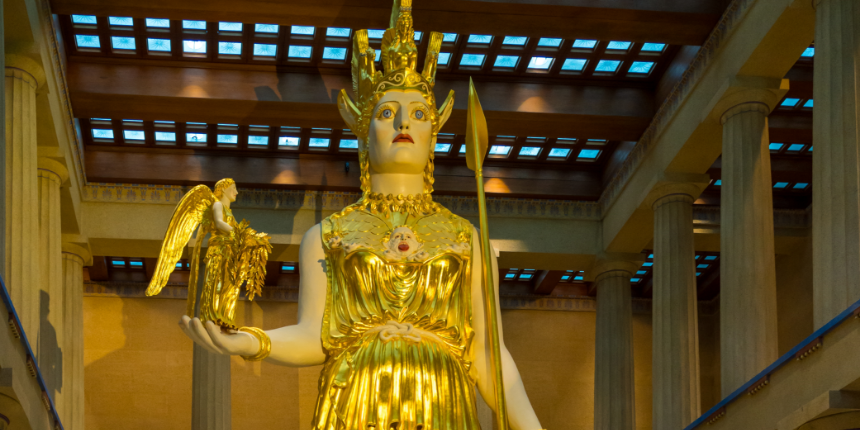
A replica of the original statue of the Goddess Athena at Nashville’s Parthenon
Goddess Athena in her gleaming armour, looking eastward. In her right hand she cradled the goddess of victory Nike, and in her left a shining shield and spear.
Architectural Brilliance

Greek Parthenon Architecture reflects “The pinnacle of brilliance in pursuit of beauty”
- The Parthenon is a beacon of ancient Greek architecture. Spanning 23,000 square feet, the temple is built on a rectangular base measuring 30.88 metres by 69.5 metres.
- Forty-Six columns are surrounding the Parthenon, with eight columns at the front and back and seventeen on each side framing the rectangular inner chamber, called cella.
- It is characterised by distinct Doric order and elaborate Ionic style in its simple yet balanced proportions and robust design. The temple stands on the foundation of the ancient Parthenon, which was fabricated of limestone.
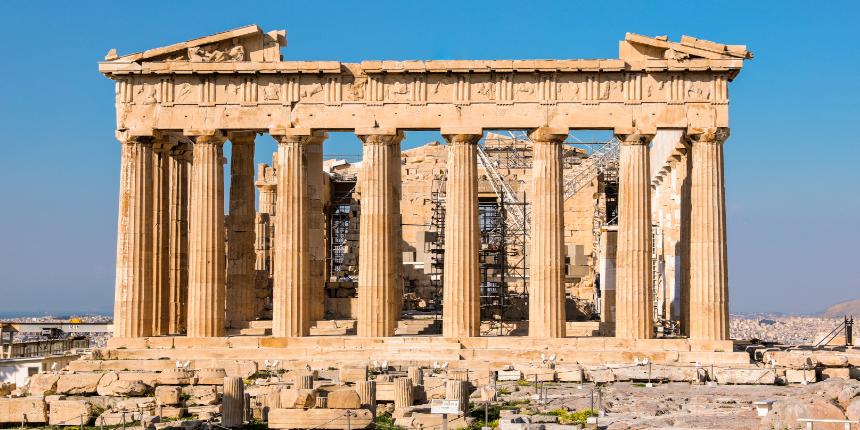
Interestingly, it is believed that the design of the Parthenon is crafted with a specific mathematical precision in mind, forming a golden rectangle ratio (4:9 ratio), a proportion known as ‘sacred geometry’.
Doric Columns and Friezes
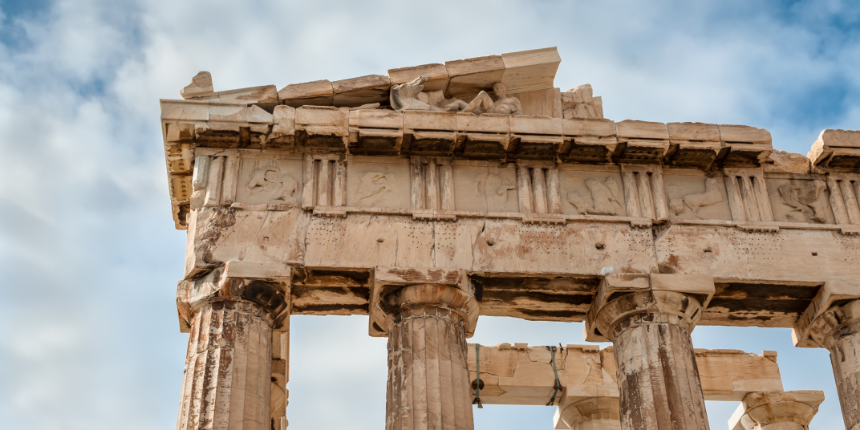
The Parthenon’s illustrious design is modelled after the classic form of the Doric Order—an ancient Greek architectural style. The distinctive columns are of slender, fluted shafts with simple capitals, tapering toward the peak, where they meet the entablature formed of architrave, frieze, and cornice.
The architecture of the Parthenon is a masterpiece of classic grandeur. Adorning the top of its inner chamber is the most elegant feature, the sculpted frieze, depicting scenes from the myths and legends of ancient Greek mythology. Intricate carvings of religious rites and civic ceremonies come alive using the bas-relief technique with fine detail and exquisite precision, showcasing the craftsmanship and finesse of Greek Architecture.
Metopes and Pediments
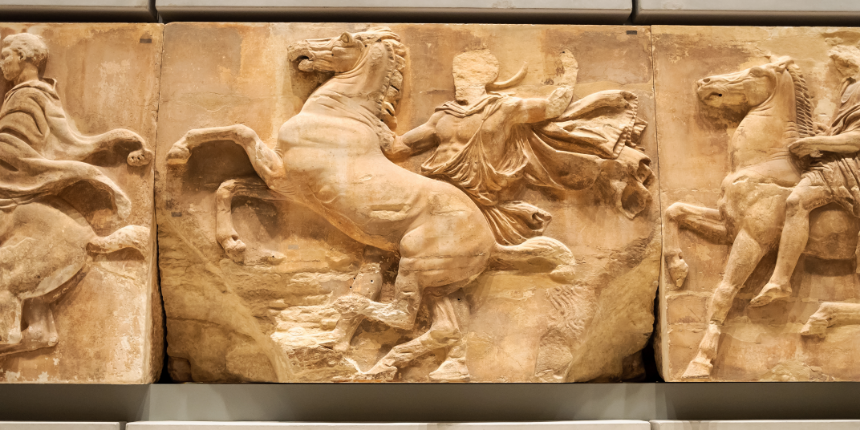
Another fascinating fact- Despite the lack of foundation and being built on top of seismogenic terrain, the Parthenon still stands strong and undamaged after 2,000 years. How come? This is due to its triple anti-seismic shielding, which has protected the superstructure over the centuries from earthquakes.
Metopes are the rectangular panels on the frieze that depicts the four dramatic battles, including the clash between Amazons on the west, the Gods and Giants on the east, Gigantomachy. And the fierce battle between centaurs represented on the south side and the one on the north side is lost in the brutal Trojan War. The Greek sculptor Pheidias masterfully manifested a series of mythical artworks, showcasing unparalleled craft and skill. Through 92 metopes Greece’s mythology comes to life.
Pediments are serenely sculpted triangular façades, each adorned with finery in the form of 50 glorious, round sculptures. The east pediment offers a mystical view of the birth of Athena, while the west pediment delineates the challenge between Athena and Poseidon to claim control of Attica.
Restoration and Preservation
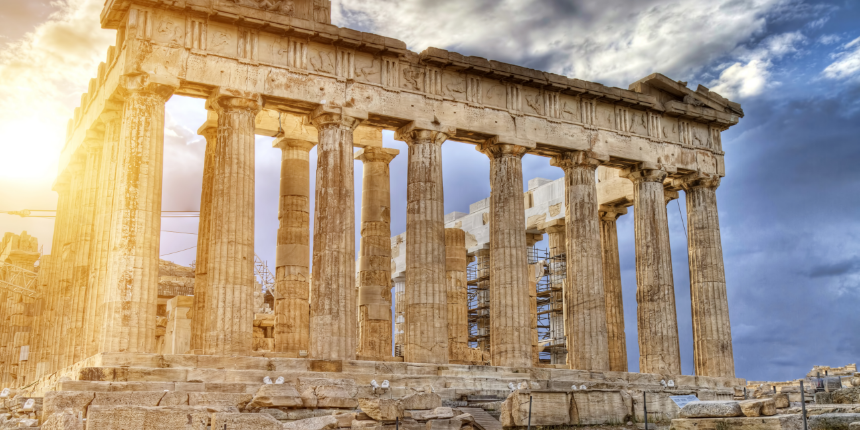
In Greece, the Sun always shines.
During the 1970s, the Greek government started the restoration project of the wondrous Parthenon on the Acropolis of Athens. The project comprises surface conservation, anastylosis, structural repair, documentation, plus an educational program. With technical interventions and computer-aided assistance, ancient ruins and artefacts were identified and safeguarded, while the marble blocks were restored to their original position. The archaeological team implemented new materials to strengthen the grand temple and protect it against weather conditions.
However, after over four decades, the authorities made the decision to keep the Parthenon as an incomplete ruin adorned with its majestic design elements and artefacts that will forever remind us of its decadent glory.
In a Nutshell
Standing as an eternal symbol of the ingenuity and creativity of the ancient Greeks, the iconic Parthenon’s exquisite beauty and detailed artistic mastery, evoke admiration and leave you spell bound. Despite centuries of destruction and disasters, the Parthenon is a testament to Greece’s exceptional heritage and remarkable aesthetics. Its grandiose scale, timeless legacy, and profound impact on the world of culture continue to inspire and bewitch the generations, attracting millions of visitors every year.
